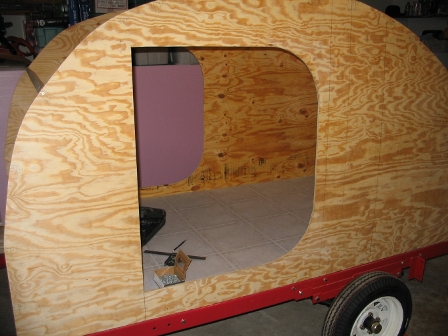Page 1 of 1
Door Threshold Question

Posted:
Tue Feb 28, 2006 10:25 amby sunny16
I know this has been addressed here before but I am confused as to how one treats the door threshold. I can see how to trim out the door for a gasket around the sides and top but what do you do on the bottom? I don't want a lip that will become a knee breaker or a shin splitter if you know what I mean. I have a door gasket that is used on 18 wheeler trailer doors that I want to use but I still have to figure out the hinges. And if that doesn't work, I will go with the aluminum trim and foam gasket around the doors instead. But I don't see what the threshold will look like. Any suggestions or photos would help.


Posted:
Tue Feb 28, 2006 10:37 amby sunny16
This is a picture of the door gasket I want to use.
Gasket profile:

The square side fits a 1 inch thick door and the gasket side offers about an inch of cover and about a half inch of gap. Half of this is a hard plastic and the gasket side soft rubber. WOrks real well except for the mitering of the corners. But it should give a good water tight fit.

Posted:
Tue Feb 28, 2006 10:38 amby sunny16
One more picture. I haven't figured out how to post multiple pics yet.


Posted:
Tue Feb 28, 2006 10:49 amby mikeschn
Depending on your skinning method will probably determine you you finish your door threshhold....
If your're painting, just paint the threshhold.
If you're covering in aluminum, just use aluminum angle
If you're covering in filon, use aluminum angle
If you're building a woody, just seal it with epoxy or spar urethane.
I wouldn't know how to use that seal you have pictured up there...
Mike...

Posted:
Tue Feb 28, 2006 10:55 amby sunny16
OK, maybe I didn't ask the right question. What do/can you use to seal the bottom edge of the door so rain, wind, bugs, etc. don't get in. Once agian I don't want a lip to bang my shins on down there.

Posted:
Tue Feb 28, 2006 11:15 amby mikeschn
Oh, I think I understand the question now. You have a gap between your walls and your door, and you want to seal out the elements.
You can either use an interior sealing plate... Like on the Lil Diner... let me see if I can find a pic...
Or t-molding. Again, I'll look for a pic...
Mike...

Posted:
Tue Feb 28, 2006 11:28 amby mikeschn
Okay, here's the tmolding...
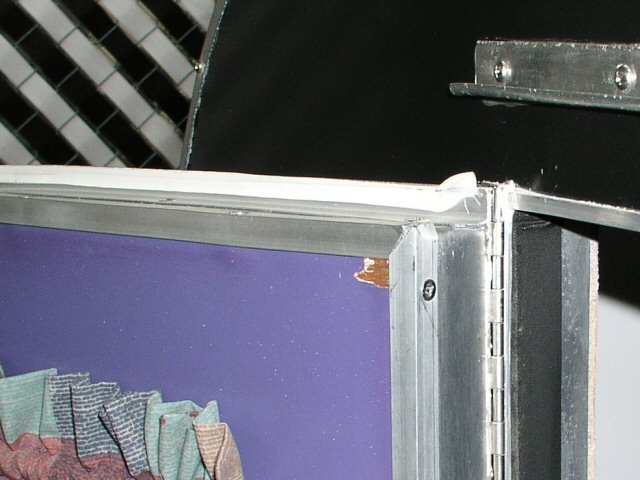
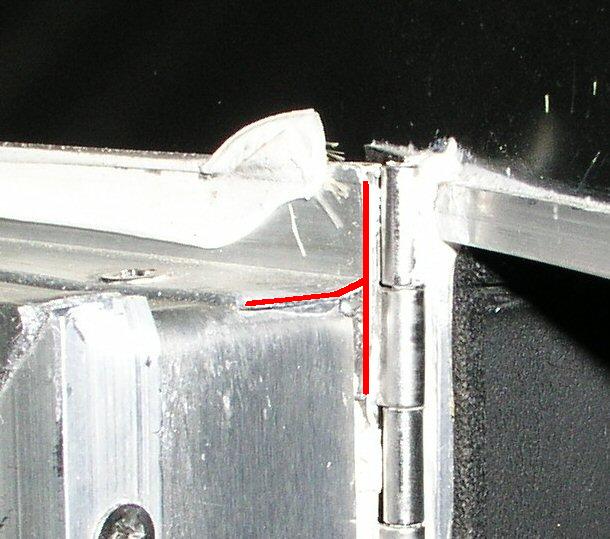
Mike...

Posted:
Tue Feb 28, 2006 11:34 amby mikeschn
And the Lil Diner door seal..
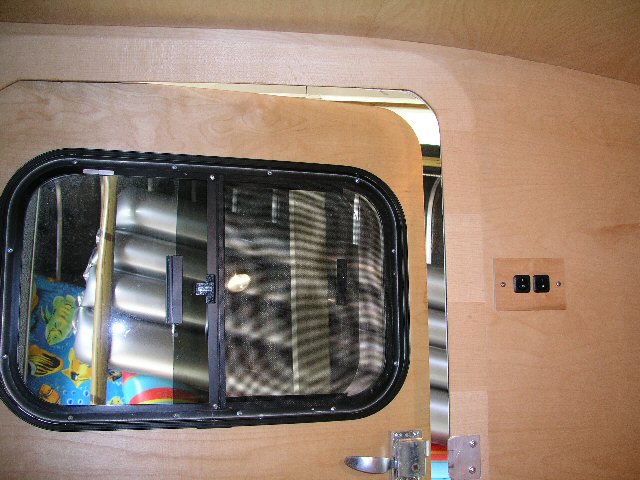
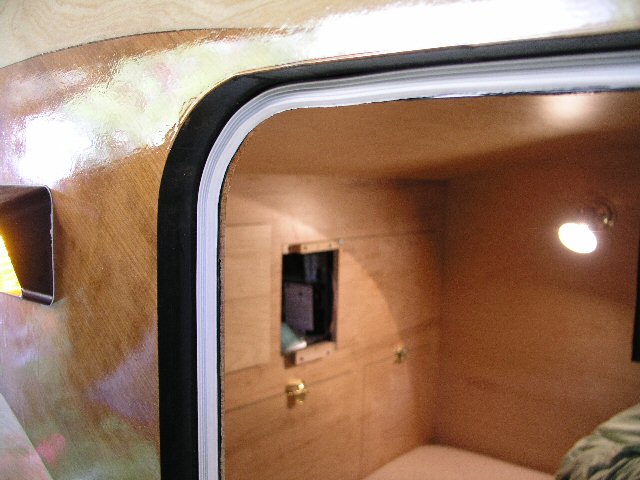
Mike...

Posted:
Wed Mar 01, 2006 10:28 amby Loader
Mike,
Looking at the two methods you used to seal the doors, which one do you prefer, and does one work better than the other? I am leaning towards the Diner method, I think the look of the extra trim/frame on the inside could be a nice accent. Looks a little easier to construct as well.
Thanks

Posted:
Wed Mar 01, 2006 11:47 amby mikeschn
Earl,
Both ways work good. I think a lot of it depends on the shape of the doors.
Rectangular doors, and doors with only 1 large radius like on the benroy work well with the t-molding. Doors with small radii on each corner work better with the inside style seal.
Also, the image you are trying to capture plays a part...
Mike...

Posted:
Wed Mar 01, 2006 12:52 pmby Loader
Thanks Mike! I think I'll be using the inside seal for my doors.
